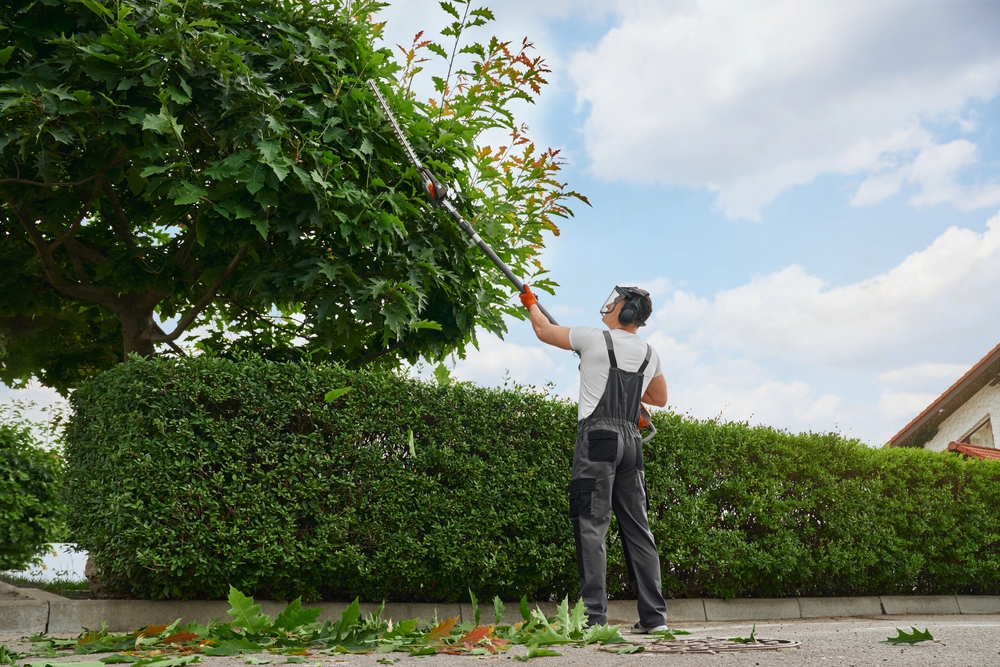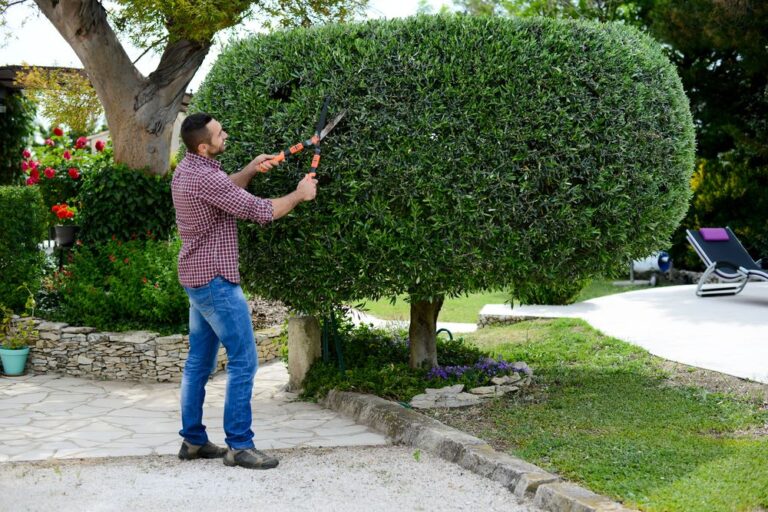Essential to our surroundings, trees offer habitat for wildlife, oxygen, and shade. They are not, however, impervious to diseases and insects. Preventing these problems mostly depends on regular tree trimming, sometimes referred to as pruning. This guide shows how pruning helps maintain trees free from pests and healthy.
The Role of Tree Health in Preventing Pests and Diseases
Naturally more resistant to pests and illnesses are healthy trees. Strongly built trees with good air circulation are less prone to suffer from pests or illnesses, much as a fit person can fight off disease better than a sick one. Pruning removes weak or diseased tree sections, so preserving this health.

The Importance of Proper Pruning Techniques
Tree Pruning goes beyond simple branch clipping. This is a science about knowing how trees develop and how one should shape them without endangering them. Right pruning methods can:
- Cut out hiding areas for bugs.
- Increase airflow.
- Minish moisture accumulation that supports fungal development.
Pruning to Reduce Insect Hiding Places
- Removing Dead and Dying Wood: Deadwood draws insects in like manner. Many bugs, including carpenter ants and borers, find refuge in it. Eliminating dead or dying limbs stops these pests from reaching healthy sections of the tree.
- Thinning the Canopy: A thick canopy can prevent sunlight and airflow. Reducing shady, humid regions where illnesses and pests flourish helps to thin the canopy. It also lets you find infestations early on.
- Cutting Back Overgrown Branches: Perfect houses for insects can be created by the intertwining overgrown branches. Cutting these limbs reduces insect hiding places and helps avoid crowding.
Pruning to Improve Air Circulation
- Reducing Humidity and Moisture: Bad airflow collects moisture, which provides a perfect habitat for bacteria and fungus. Pruning opens the tree so that air may flow freely and any residual moisture can dry out.
- Discouraging Fungal Growth: Like powdery mildew, many fungus grow in humid environments. Pruning the trees lowers the likelihood of these diseases seizing hold by increasing air circulation.
- Minimizing Insect Breeding Grounds: Damp locations and standing water can draw insects. Pruning removes these areas, therefore upsetting their reproductive patterns.
Pruning to Enhance Sunlight Penetration
- Promoting Healthy Growth: Photosynthesis—the process by which trees get the energy they need to flourish— depends on sunlight. Pruning lets sunlight reach every section of the tree, therefore promoting consistent development.
- Reducing Shade-Loving Pests: Like scale insects, some pests enjoy shaded regions. Pruning lessens the tree’s appeal to these pests by allowing more sunlight in.

Common Tree Pests and Diseases Prevented by Pruning
Insect Pests
- Aphids – On weak, crowded trees, these tiny, sap-sucking insects flourish. Pruning removes their preferred homes, so deterring them.
- Scale Insects – Found on shady, overgrown limbs, these bugs feed on sap, hence weakening trees.
- Borers – These bugs target deadwood. Eliminating it keeps them from extending to healthy branches.
Fungal Diseases
- Powdery Mildew – a white, powdery fungus adapted for humid environments. Good trimming lessens the moisture required for survival.
- Dutch Elm Disease – Driven by beetles, this disease destroys elm trees. Eliminating sick branches helps to slow down their dissemination.
- Oak Wilt – a fungal disease mostly affecting oak trees that usually starts from wounds. Pruning in the correct season helps ward against illness.
Best Practices for Pruning to Prevent Pests and Diseases
- Timing of Pruning: Pruning has timing that is quite important. Steer clear of cutting during the growing season while illnesses and insects are most active. Usually the ideal times are winter or early spring.
- Proper Cutting Techniques: Make neat cuts with sharp tools; these heal more quickly and lower the infection risk. Steer clear of rough edges and ripping.
- Sterilizing Pruning Tools: Clean your tools with alcohol or a bleach mixture both before and after pruning. This stops diseases from one tree spreading to another.
- Avoiding Stressful Pruning: Keep from cutting too many branches at once. Overpruning stresses the tree and increases its susceptibility to pests and diseases.

Conclusion
- The Benefits of Regular Pruning: Regular pruning keeps trees healthy and beautiful. It helps them resist pests, grow stronger, and live longer. By investing time in proper trimming, you’re not only protecting your trees but also enhancing the environment.
- The Role of Professional Tree Care in Preventing Pests and Diseases: For larger trees or severe infestations, professional help may be necessary. Certified arborists have the skills and tools to prune trees effectively without causing harm.
Take action today—prune your trees and protect them from pests and diseases!
Tree Trimming Richmond
(804) 533-3943
https://treetrimmingrichmond.com/



